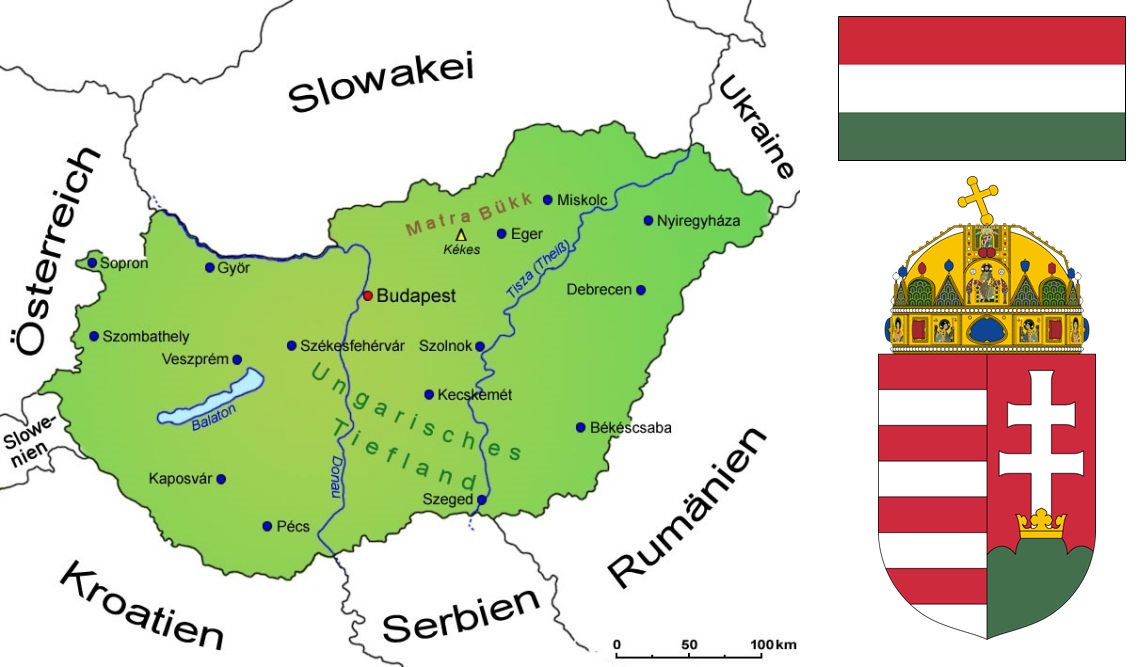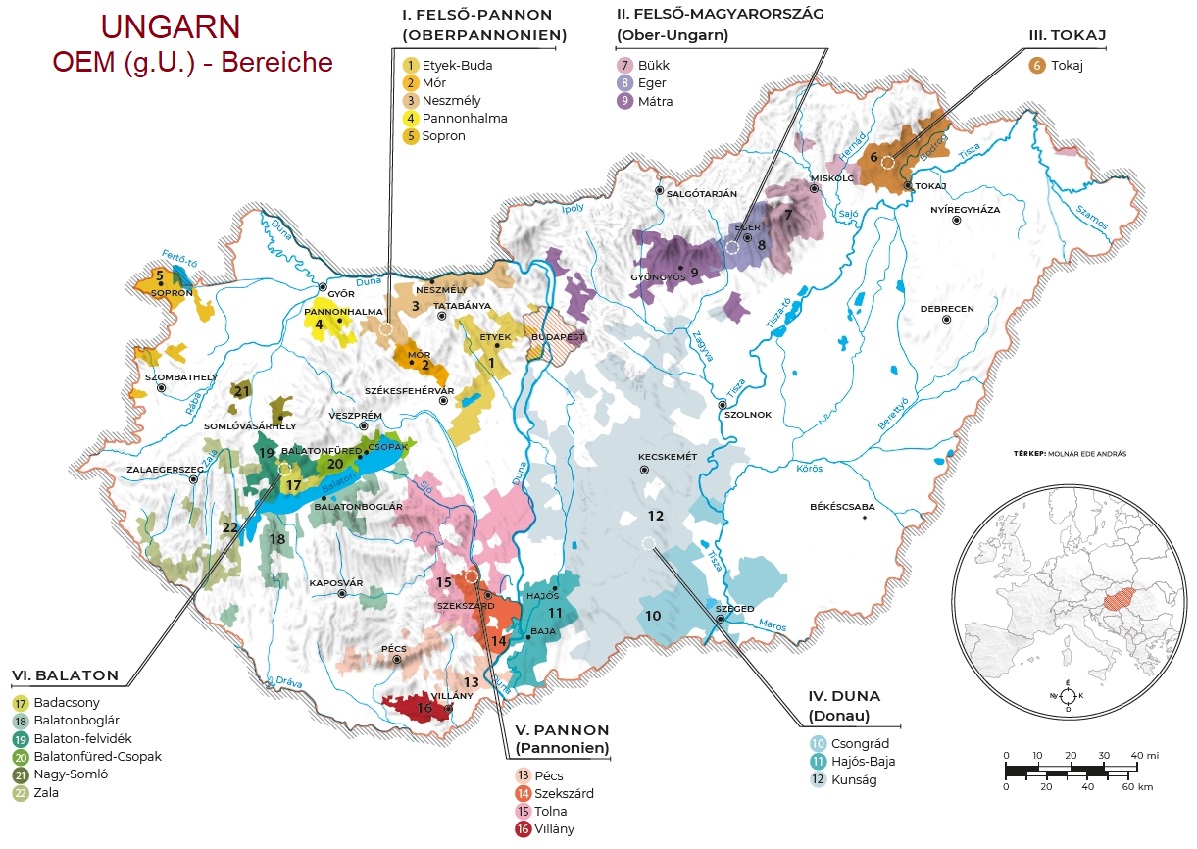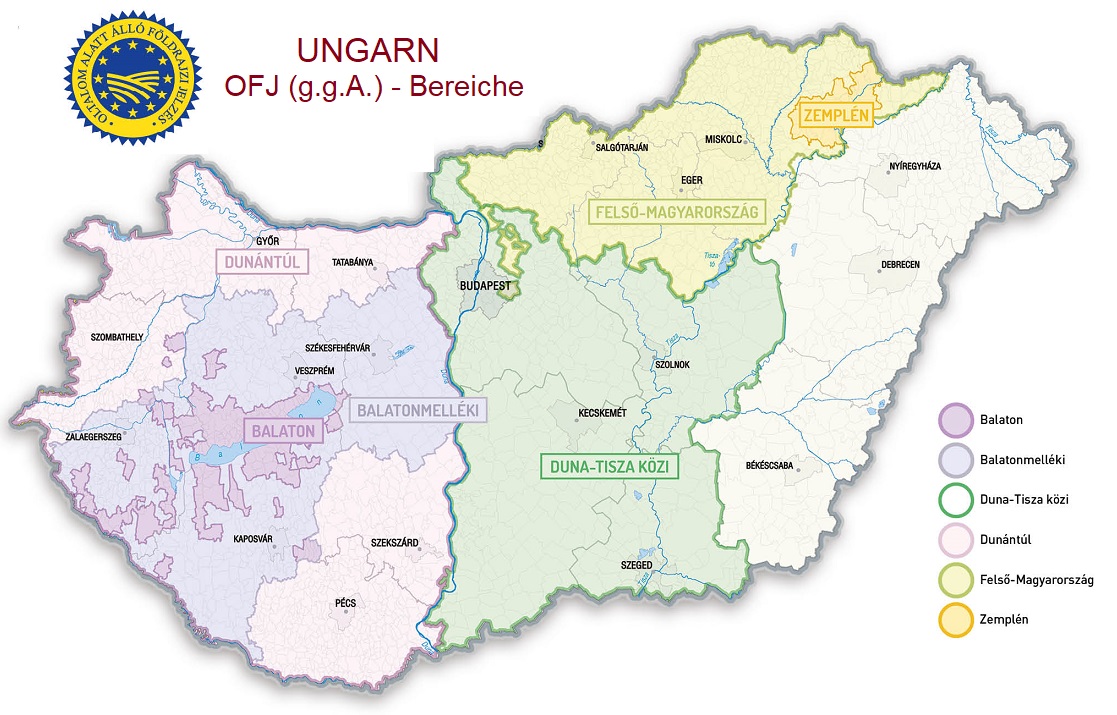Hungary
The parliamentary republic of Hungary (Magyarország in Hungarian) in Central Europe with its capital Budapest covers 93,036 km². Located in the Pannonian Basin and crossed by the Danube, the country borders Slovakia and Ukraine to the north, Romania to the east, Serbia and Croatia to the south, and Slovenia and Austria to the west.

History
Hungary has a very old wine-growing culture, as wines from Sopron and Eger were already well known in the 13th century. Viticulture in the Carpathian Basin was characterised by ancient Central Asian traditions as well as Roman wine culture. Despite various wars and unrest, wine has been cultivated here for over 1,000 years. Even the Ottomans, who occupied most of the country for around 160 years, did not suppress viticulture despite the ban on alcohol and were happy to collect taxes for it, but development was inhibited during this time. According to legend, Emperor Charlemagne (742-814) was so enthusiastic about "Avar wine" that he had some vines brought to Germany.
The Hungarian King Matthias Corvinus (1440-1490), who resided in Vienna (Austria) in the last five years of his life, is recorded as saying that "all the people should have wine and the winegrowers should be held in high esteem". In the Middle Ages, as in many countries, the Catholic Church played a key role in the spread of viticulture and wine culture in Hungary. The famous Tokay is decisively linked to the history of wine in Hungary. After the phylloxera catastrophe and the two world wars, the focus shifted to the production of mass-produced wines. However, since the political upheavals of 1989 and the re-establishment of the winegrowers' association, viticulture has been on the rise again.
Wine-growing regions
Hungary has a variety of soil types, from sand, loess, loam, limestone and marl to various volcanic rocks such as basalt, tuff and andesite. The climate is Central European and continental with hot summers and cold winters. The 223 registered grape varieties (over 60 of which are indigenous) are predominantly white wine varieties. However, around 2,000 hours of sunshine a year and various microclimates also favour the production of red wines. The Danube, which flows from north to south, divides the country into roughly two large halves.
Hungary is divided into six wine-growing regions (Borrégió). These consist (with the exception of Tokaji) of several wine-growing regions (Borvidék). There are 22 wine-growing regions, all of which are considered OEM(PDO = protected areas of origin for quality wines). In some wine-growing regions there are smaller PDO areas as enclaves. There are 33 protected designations of origin in total (status mid-2021). This number is constantly increasing thanks to rapid developments.

Wine-growing regions (Borréggió) and wine-growing areas (Borvidék) = OEM and PDO respectively .
The 6 wine-growing regions with a total of 33 OEM (PDO) areas:
Balaton (Lake Balaton )
- Badacsony
- Balatonboglár
- Balatonfüred-Csopak
- Balaton-felvidék
- Csopak
- Káli
- Nagy-Somló
- Somló
- Tihany
- Zala
Duna (Danube)
Felső-Magyarország (Upper Hungary)
Felső-Pannon (Upper Pannonia)
- Etyek-Buda
- Etyeki-Pezsgő
- Mór
- Neszmély
- Pannonhalma
- Sopron (Ödenburg)
Pannon (Pannonia)
Tokaji (Tokaj)
The famous Tokaj is produced in the Tokaj-Hegyalja region. A speciality is a small area in the east of Slovakia, which borders directly on the region. Here, a Tokaj-style wine is produced in the three (formerly Hungarian) municipalities of Kistoronya, Szõlõske and the Slovakian part of Sátoraljaújhely. After years of disputes, the two...
Voices of our members

Serious sources on the internet are rare - and Wine lexicon from wein.plus is one such source. When researching for my articles, I regularly consult the wein.plus encyclopaedia. There I get reliable and detailed information.
Thomas Götz
Weinberater, Weinblogger und Journalist; Schwendi
